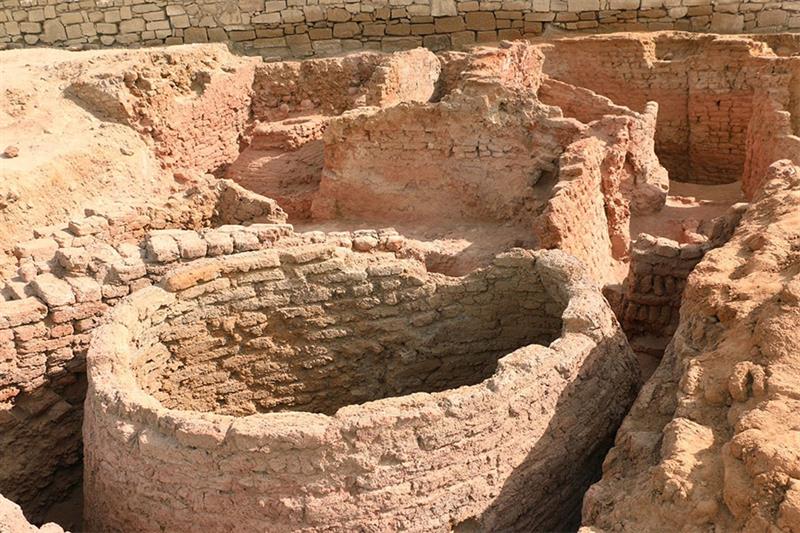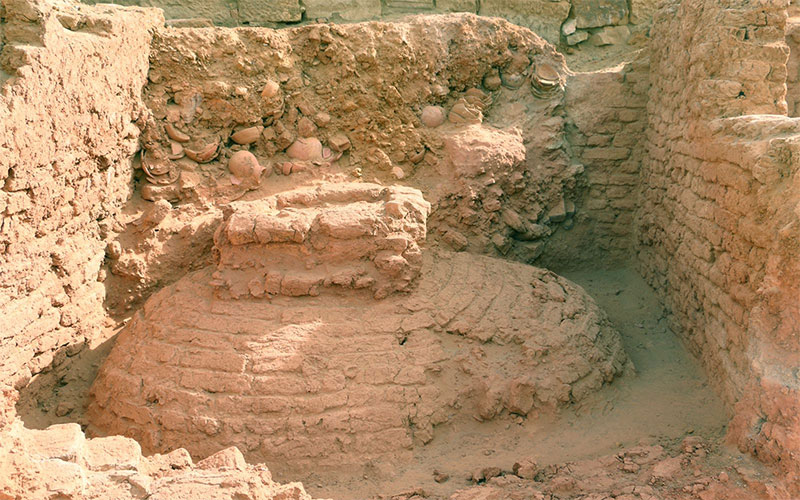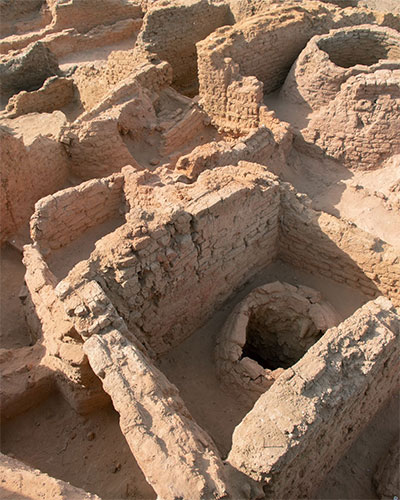Administrative Centre from the First Intermediate Period uncovered in Kom Ombo
Nevine El-Aref , Wednesday 2 Mar 2022
Remains of a large administrative facility from the First Intermediate Period were uncovered during an excavation carried out by an Austrian-Egyptian mission led by Eriny Foster this week at the Upper Egyptian town of Kom Ombo that lies approximately 45 km north of Aswan on the east bank of the Nile River.

It consists of many rooms containing more than 20 conical silos used for grain storage as well as cellars, staircases, and storerooms.
"The walls of these silos are exceptionally well preserved, standing up to two meters in height, and some of the silos are even taller," said Foster. The building probably served as a centre for grain distribution.
"It is a unique discovery at Kom Ombo and indicates the importance of the town in Upper Egypt during the First Intermediate Period," he pointed out.
Abdel Moneim Saeed, the head of Aswan and Nubia Antiquities, pointed out that Kom Ombo is a protected area, containing the famous Ptolemaic Temple of Kom Ombo, which is a regular feature of tourist itineraries.

Surprisingly, the surrounding area of the ancient town was never investigated systematically.
The Austrian Archaeological Institute in Egypt, which has a long-term research interest in settlement archaeology, began a project there in cooperation with the Egyptian Ministry of Tourism and Antiquities in 2017 with the aim of investigating Kom Ombo and its hinterland.
The town was settled from the Early Dynastic times until the Early Islamic Period and, after a long gap, again during the British occupation of Egypt when a fort was built in the town as part of defences erected against the Mahdist uprising in Sudan.

-- Sent from my Linux system.
No comments:
Post a Comment